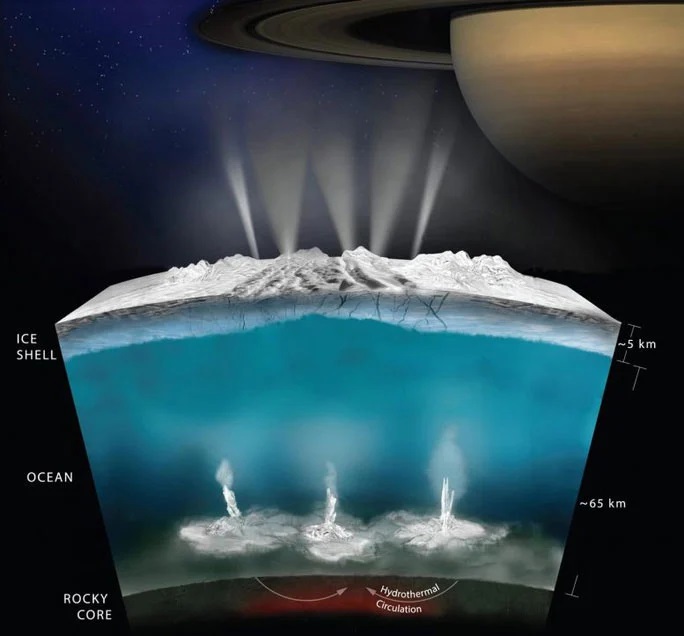New findings from the Southwest Research Institute (SwRI – USA) help at least 3 moons and 1 dwarf planet in the solar system become the prime candidate for the hunt for extraterrestrial life.
The SwRI claimed that worlds with subterranean oceans may be more conducive to life than a planet with surface oceans like ours. The main reason is that the rock and ice crust will protect this underground ocean from impacts, the radiation of the harsh space environment is more effective than that of the atmosphere and the atmosphere of the Earth. In addition, life is difficult to detect and invade by curious people from the outside like … our earthly people.
The aforementioned research has just been reported at the Conference on Planet and Moon Science (LPSC 52) taking place in the United States. According to Dr. S. Alan Stern of SwRI, lead author of the study, worlds with such subterranean oceans are common in many star systems around us. In the solar system alone, there are at least four “more habitable worlds” in this way, that of the moon of Jupiter, Europe; Titan and Enceladus of Saturn; with the controversial object of a planet or dwarf planet – Pluto.
According to Sci-tech Daily, research shows that worlds with surface oceans like Earth face many risk factors, many of which may be too dangerous compared to the fragile protective layer of magnetism and the atmosphere: attacks from asteroids, comets, radiation from supernovae, cosmic radiation from the mother star like the solar storm … Much evidence of collisions and incidents The explosion of Supernova once caused a major extinction of the planet. Not to mention many other types of natural disasters on the planet itself.
“On the contrary, worlds with underground oceans can provide life with a stable environment, less likely to be threatened” – said Dr Stern.
The layer of ice and ice thick enough that life escapes even the most advanced probes of humans today is what could overturn the famous “Fermi Paradox” of scientist Enrico Fermi, wondering why we can’t- we cannot find life if it is ubiquitous in the universe. With this study, the authors believe that it is the protection from the prying eyes of other planets like humans that helps life on the four celestial bodies mentioned above to develop more smoothly.
However, in the near future, NASA plans to send robots capable of drilling deep into the ice shell of these objects to probe, the first target being the moon Enceladus.


